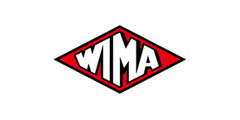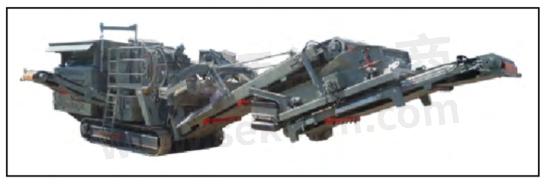WIMA PowerBlocks Energy Storage Solutions with Long Lifetime >90,000 Hours

Although construction, agricultural, and forestry machinery is still dominated by diesel and hydraulic drives hybridization fairly suggests itself.
Almost all construction, agricultural, and forestry machines, dockside cranes, forklifts, busses, and ships mistreat their diesel engines in a staccato of full load and the idle speed and by the way, drive the heavy vehicles. If the frequently occurring load peaks are buffered electronically cost, consumption, as well as the emission of exhaust and noise, are reduced considerably. The limits for particulate filters, nitrogen oxides, and hydrocarbons for off-road vehicles have been drastically reduced by the EU since 2001: Was it several grams each of those air pollutants per kWh that were permissible at that time, with the final Tier 4 level in 2014 the values were reduced to tenths and hundredths of grams.
Hence, more efficient drive solutions are required e.g. realized with energy storage solutions based on WIMA PowerBlocks.

Example 1: ROCKSTER parallel hybrid crasher.
Due to hybridization, the diesel engine operates nearly constantly at the optimal speed to drive the generator for the electric motor. Any load peaks are cushioned by WIMA PowerBlocks which buffer the energy. All components are water-cooled and meet the stringent requirements of the application conditions. They are specifically designed for usage in mobile construction machines and protected against dust, dirt, and water. Moreover, they are resistant to vibration and extreme temperature fluctuations.
Example 2:Wheel-loader with VISEDO hybrid drive.
Heavy wheel-loaders have diesel engines with a power of around 300 kW which drive both the wheels and the hydraulic system. Due to their dual function, they rarely run in their optimum operating map-above all since wheel loaders rather shunt than make distances. But actually, diesel engines are too slow in reaction to this purpose. This is totally different with electric motors: Within milliseconds they supply full engine torque from off-condition, load-cycle changes are run more efficiently, and when actuated exactly they enable the traction to be dosed in a way to ensure that the wheels don't spin even on the muddy ground. And all this happens almost noiseless which relieves drivers, workers, and residents in the same way.
A wheel-loader with a diesel engine of only120 kW instead of 300 kW would be in a position to use these advantages. lt runs at almost constant rotation speed and drives an a125 kW generator generating an AC current which is converted to DC current by a 300 A converter for four 75 kW electric motors being installed close to the wheels which drive the wheels and brake regeneratively. They are controlled by a 200 A inverter which at the same time conducts the regained braking energy towards the PowerBlock storage modules exhibiting the energy of one Mega Joule.
In this way, advantages in consumption of 25% have thus been achieved in customer projects. As the fuel consumption of heavy construction machinery, harbor cranes, or agricultural machinery frequently is 20 liters per hour the saving adds up to 20,000 liters of diesel at 4,000 operating hours with the CO2 emission being reduced to almost 53 tons per year. Hence, hybridization will pay for itself within two to four years because compared to cars there is one major advantage: during the operation of mobile machinery, there are numerous short power peaks it is low-priced capacitors that buffer the power instead of costly batteries. This makes hybrids more affordable and saves the environment. Also, the cost of maintenance is reduced since almost maintenance-free electric motors absorb the dynamic loads.
Because of the enormous power peaks and adverse environmental conditions hybridization of mobile machinery means high demands to the components which have to be encapsulated against dust, dirt, and water in accordance with the stringent IP standards respectively and submitted to vibration tests with 10 G and bump tests at50G.
The design of the WIMA PowerBlock energy storage modules has from the beginning been developed to fulfill the requirements in mobile heavy duty applications.
●Modular design allowing the flexibility to fit the product into application needs
●Designed especially for highly cyclical loads in heavy mobile work machines
●Water or water/glycol mixture cooling
●Temperature range -40...+65°℃
●Class IP-69 encapsulation Up to 97% efficiency
● High permissible ambient temperature and long lifetime >90,000 hours
● Integrated CMS (Capacitor Management System)including control,protection, supervision and communication functions(CANopen,SAE J-1939)
●User-friendly maintenance and service interface.
- +1 Like
- Add to Favorites
Recommend
- 6 Main Fields of Application for WIMA PowerBlock Module
- Start of Diesel Engine or A Micro-turbine Based on WIMA Powerblocks
- Power Supply Stations Based on WIMA PowerBlocks Able to Withstand the Highest Current Pulses for Periods of Seconds
- WIMA Has Qualified Capacitor Series Relevant to The Automotive Industry According to AEC-Q200
- The History and Milestones of WIMA
- Global Film Capacitor Expert WIMA Signed an Authorized Distribution Agreement with Sekorm
- Does a Manufacturer Specializing in Film Capacitors Still Have Any Future at All Compared to a Broadliner?
- GRL DNESS Energy Storage Fuses—The Reliable Guardian of High-Current Protection
This document is provided by Sekorm Platform for VIP exclusive service. The copyright is owned by Sekorm. Without authorization, any medias, websites or individual are not allowed to reprint. When authorizing the reprint, the link of www.sekorm.com must be indicated.






























































































































































































































































































































































































































































































































































































































































































































































































































































































